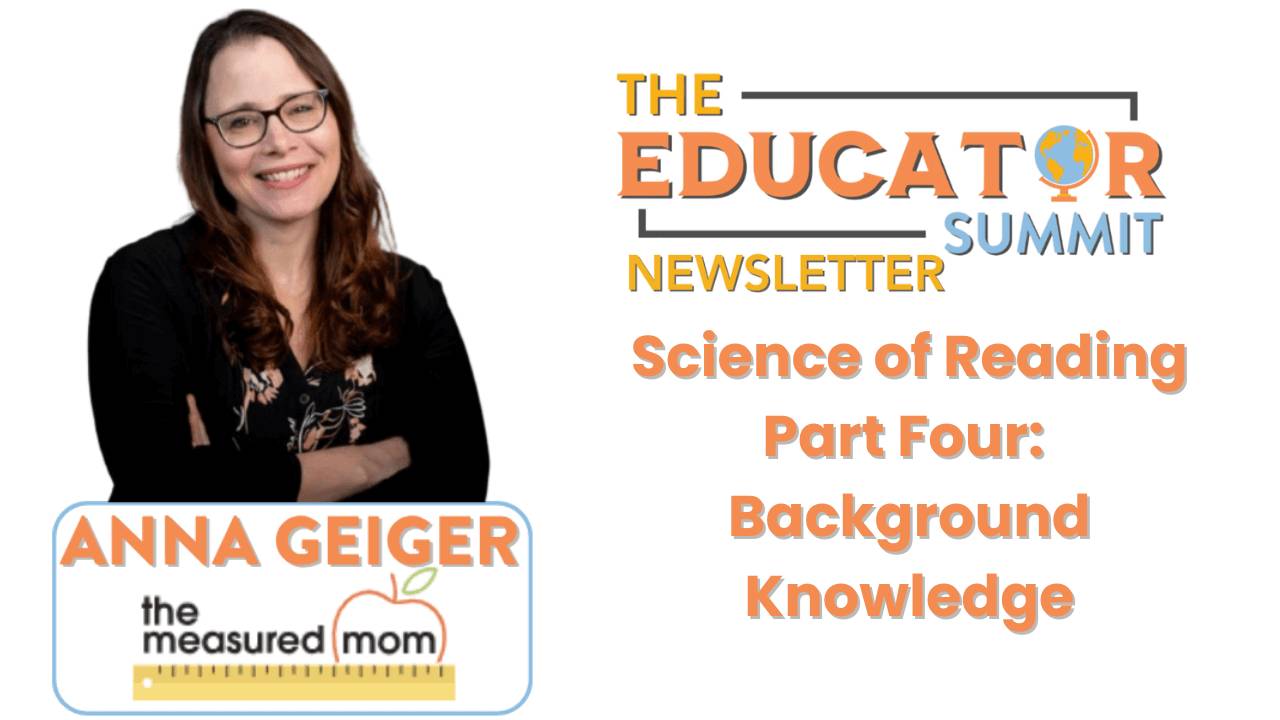Anna Geiger - Science Of Reading Part 5 of 5: Reading Comprehension Strategies


Welcome to the final installment of our Science of Reading series with literacy expert Anna Geiger, M.Ed., from The Measured Mom and author of Reach All Readers!
|
|
💥 Read All of Anna's Science of Reading PD Snippets💥
|
👉 Subscribe to Our Newsletter for More FREE PD Content ✅
As always - Happy Teaching!
-Kayla

Today, we'll be focusing on Reading Comprehension Strategies. These strategies sometimes receive criticism within the science of reading world, which is unfortunate and really not fair. Research consistently demonstrates the importance of teaching these strategies. A reading comprehension strategy is a deliberate mental action taken to enhance understanding. The issue arises when the focus shifts from the text itself to the strategy in isolation. In the past, the emphasis has been too much on the strategy and not enough on applying it to the text.
There are many effective reading comprehension strategies, and I’m going to focus on three:
- Comprehension Monitoring
- Recognizing Text Structure
- Summarizing
👉 Get More Free Content from Anna!
|
Want More Incredible PD? Explore Our Next Summit!
2. Recognizing Text Structure:
Text structure refers to how an author organizes information. Narrative texts often follow story grammar, which includes elements like character, setting, problem, and solution. Research confirms that understanding story grammar improves comprehension.
A helpful tool is a “hand poster” to represent story elements:
- Thumb: Characters
- Pointer Finger: Setting
- Middle Finger: Beginning
- Ring Finger: Middle
- Pinky Finger: End
Expository texts (informational texts) typically fall into one of five categories: description, sequence, cause and effect, compare and contrast, or problem and solution. While challenging for younger students, one way you can do this before students read a passage: introduce the text structure and have them read the text with a partner:
- Introduction: Before reading a text like “Alligator vs. Crocodile,” explain that it will compare and contrast these two animals, highlighting their similarities and differences.
- Partner Reading: Have students read the text with a partner, taking turns reading sentences. Encourage rereading if they finish early.
- Whole-Class Discussion: Reread the text aloud as a class. Identify words that indicate comparison or contrast. Have students highlight these words.
- Targeted Questions: Ask questions that focus on the comparison and contrast. For example, “How is an alligator’s snout different from a crocodile’s snout?” Partner-up again and have pairs exchange answers. Call on a student to share. Ask other questions using the same passage.
- Student-Generated Questions: Encourage students to create their own comparison and contrast questions and ask their partners.
- Self-Questioning: Teach students to ask themselves questions about the text, turn the paper over and say the answer out loud.
- Collaborative Writing: Work together to write a paragraph using the compare and contrast structure.
These activities can be adapted for different grade levels. By second and third grade, students should be actively engaging with these structures.
Visit Anna's Store to Find TONS of Grade Specific Content!
3. Summarizing:
Summarizing is a key strategy for reading comprehension: making sense of text, and building mental models.
“Paragraph shrinking” is a particularly effective summarizing technique:
- Identify the Who or What: After reading a paragraph, ask students to identify the main topic or subject.
- Determine the Most Important Information: Ask students to identify the most crucial information about the topic in that paragraph.
- Shrink the Information: Challenge students to summarize the information in 10 words or less.
Using the “Alligator vs. Crocodile” example, after reading a paragraph, you might ask:
- “What’s the who or what in this paragraph?” (Alligators and crocodiles.)
- “What’s the most important thing about alligators and crocodiles in this paragraph?” (They have different shaped snouts.)
- “Now, summarize that in 10 words or less.” (Alligators and crocodiles have different snouts.)
This activity promotes precise and focused summarizing.
We’ve covered a wide range of comprehension strategies, focusing on building understanding at the word, sentence, and text levels.
Here are some additional resources for further learning:
- Recommended Science of Reading Books: This curated list includes resources for beginners, general overviews, and more advanced texts, with notes on readability and practical application.
- Science of Reading Podcast Index: This index contains approximately 500 podcast episodes from various shows, organized by topic, including comprehension, comprehension strategies, phonics, and more.
- The Measured Mom Membership: Members gain access to a wealth of printable resources categorized to help implement the Science of Reading in Pre-K through third grade.
Thank you for joining me on this science of reading journey. I hope this series has provided valuable insights and practical strategies to enhance your teaching practice.
Warmly,
Anna Geiger
🚀 See More Amazing Content from Anna at Winter Summit 2026🌟






Responses